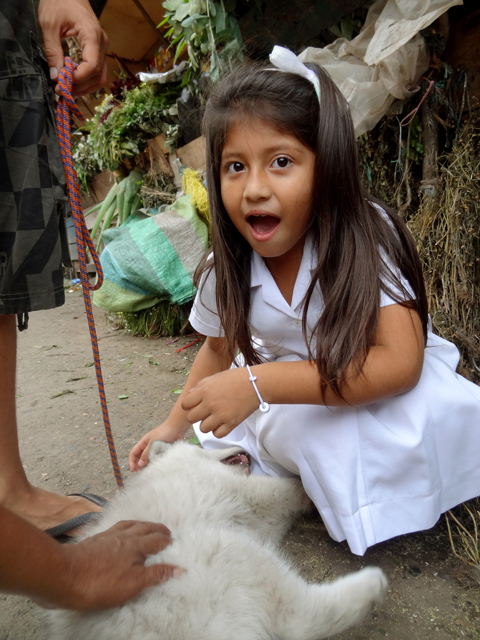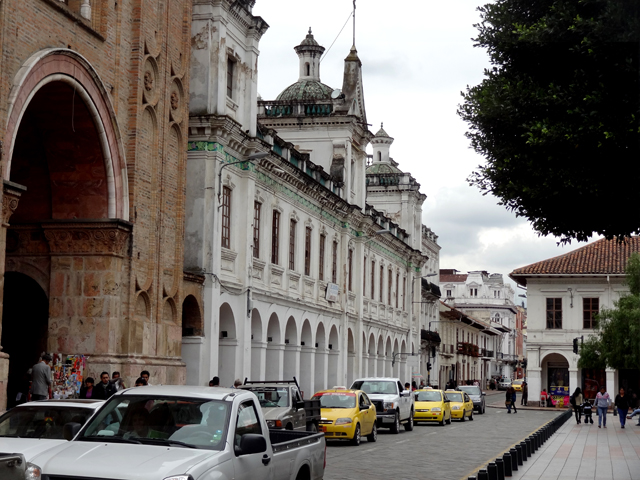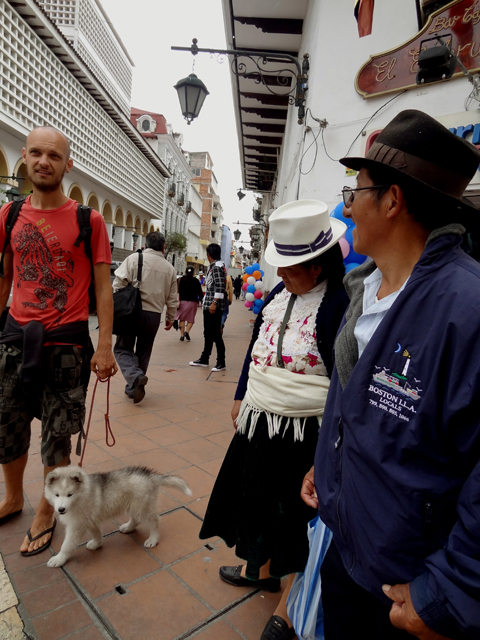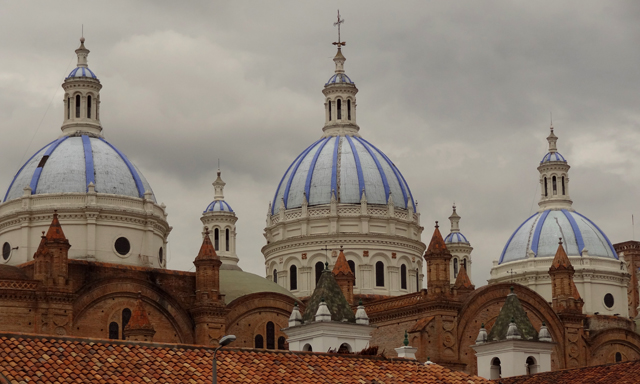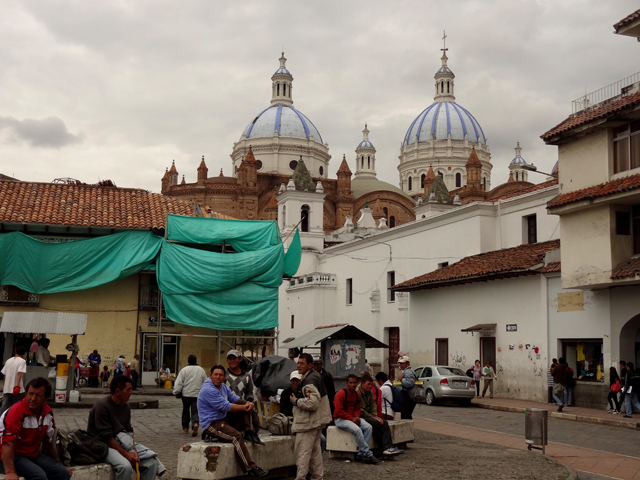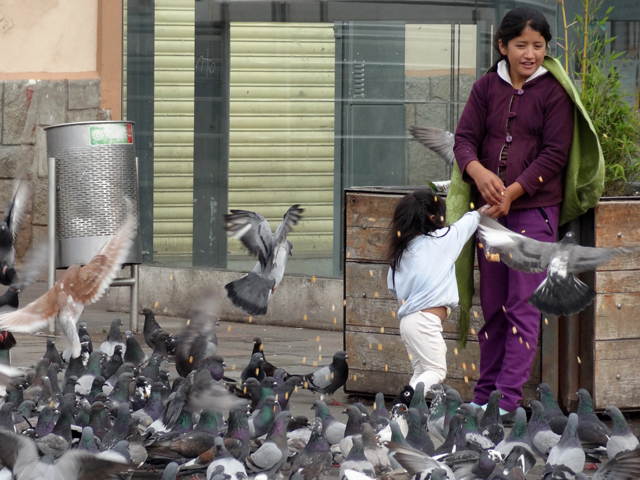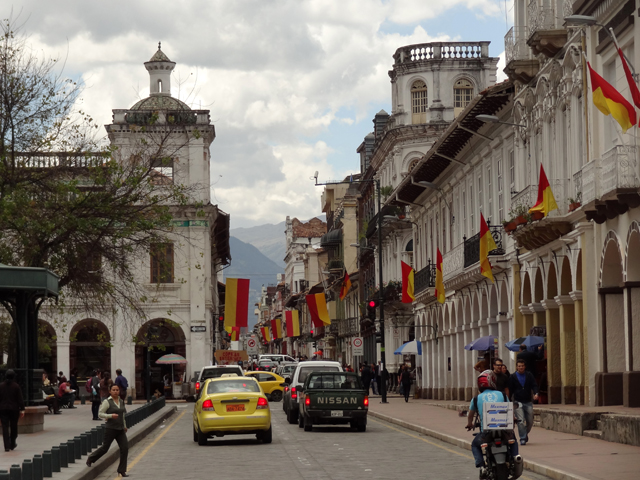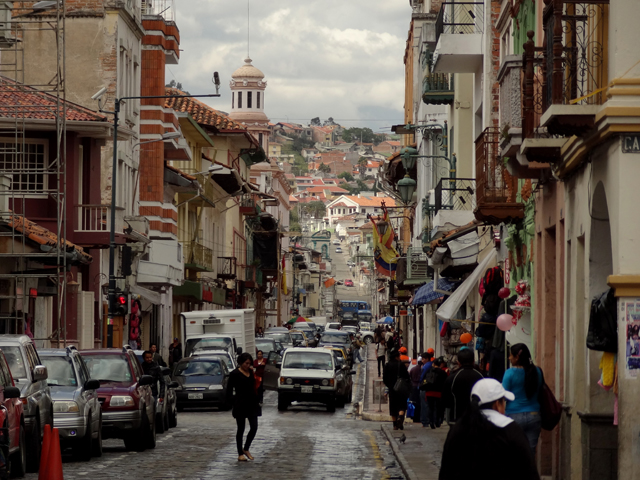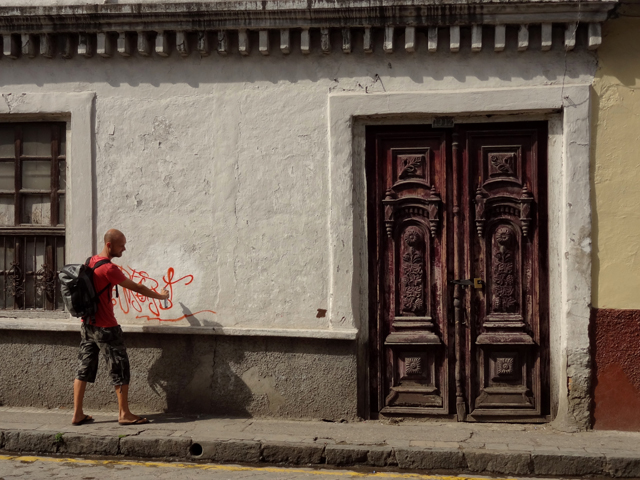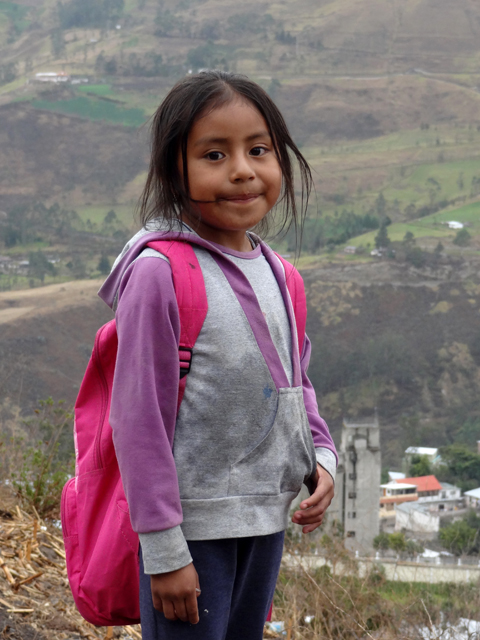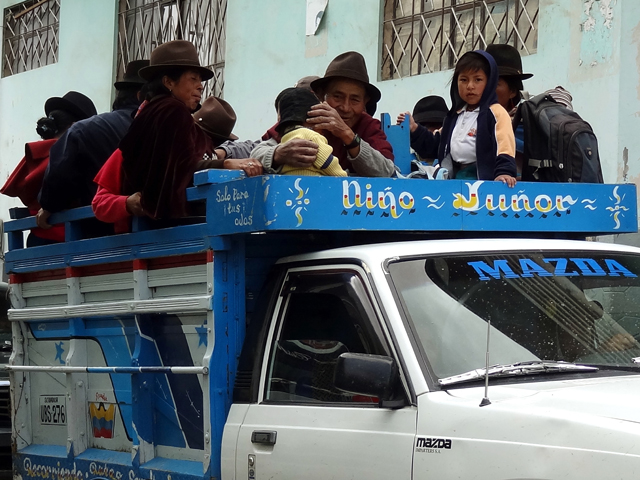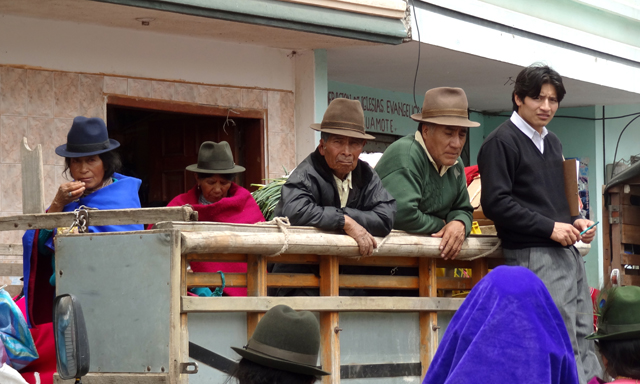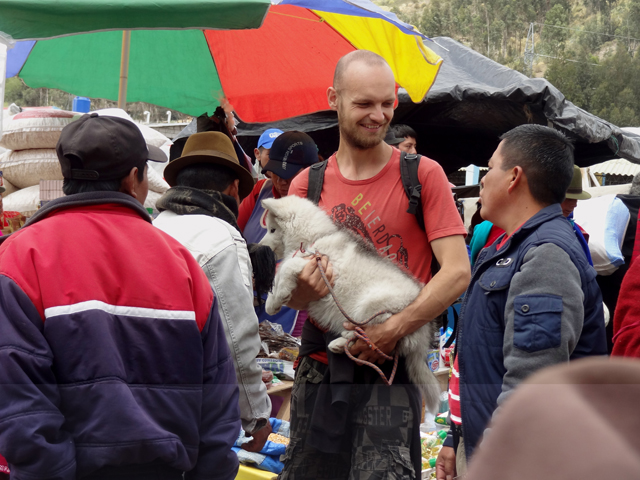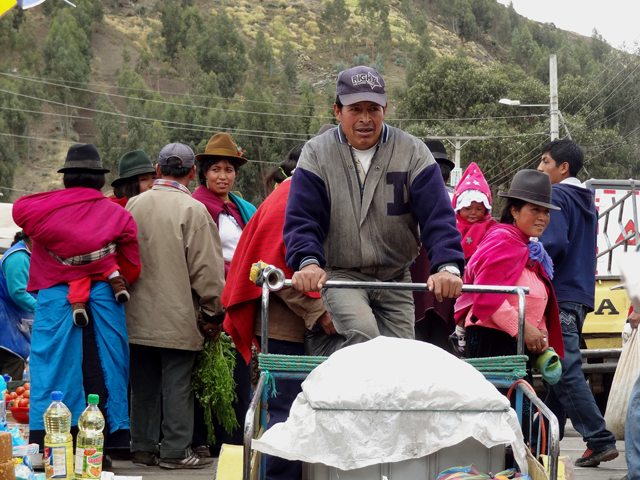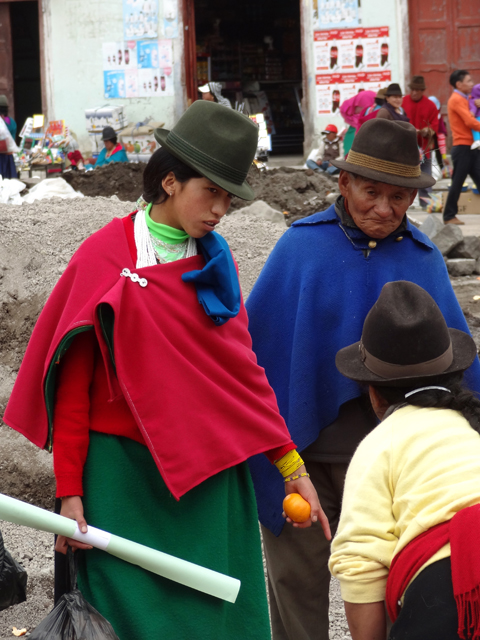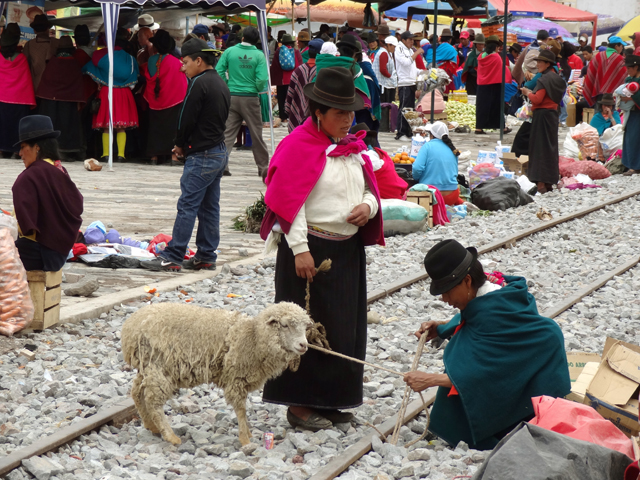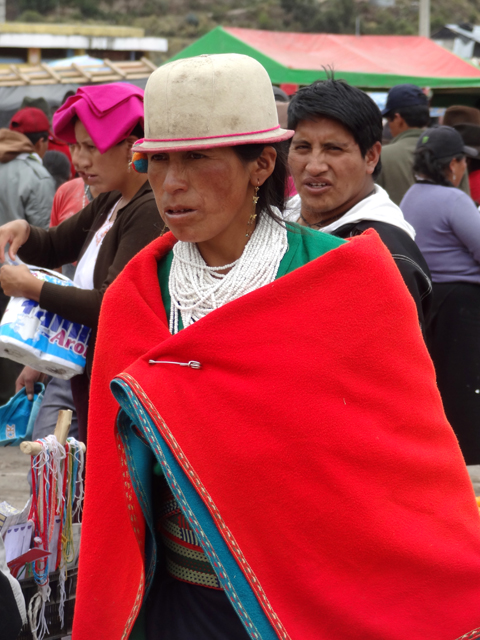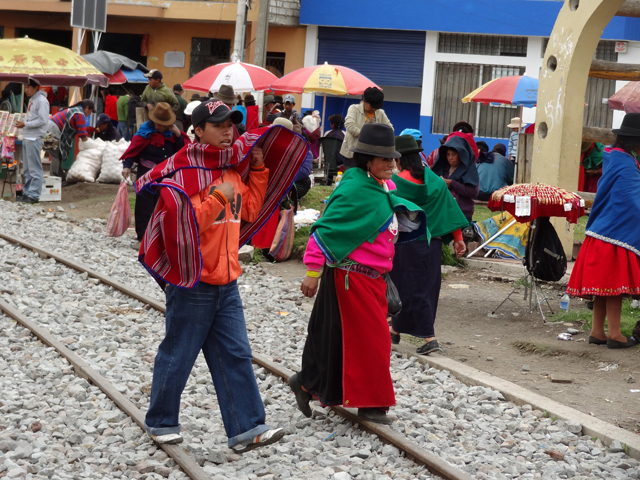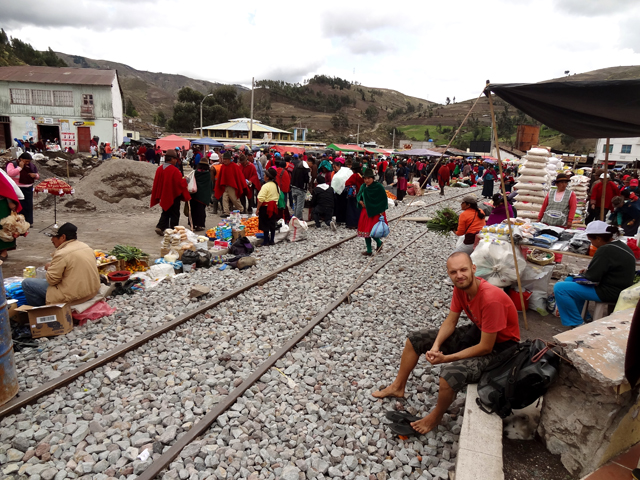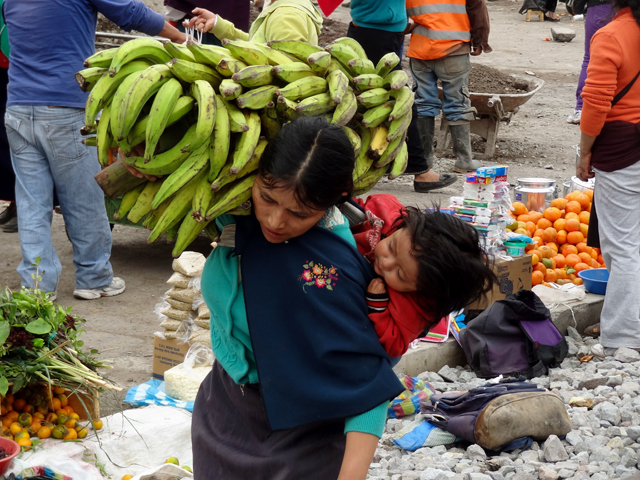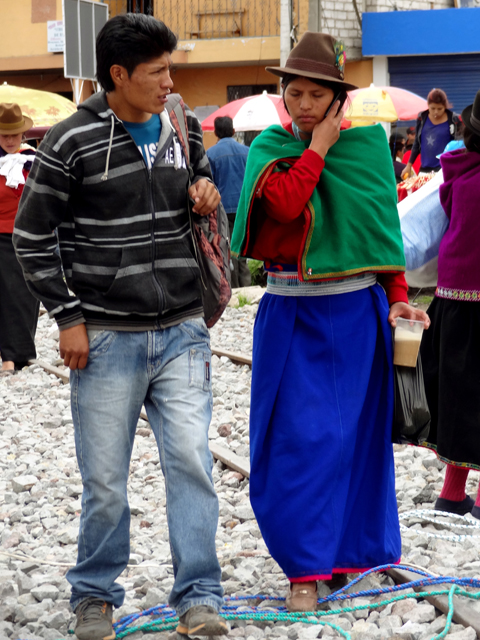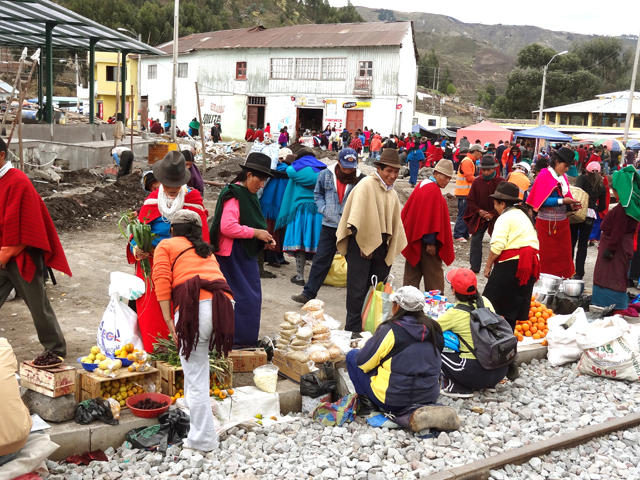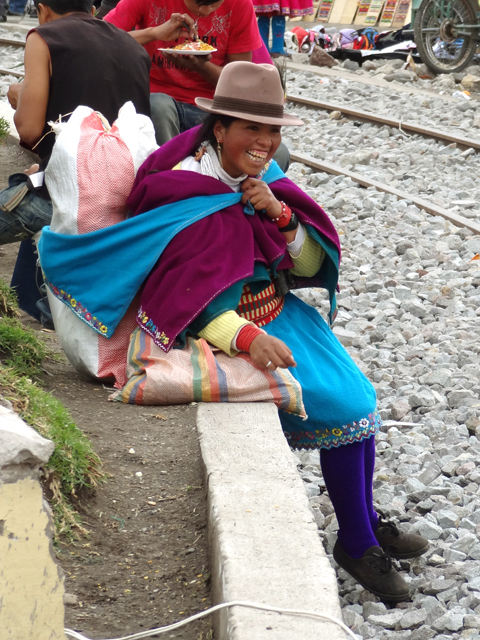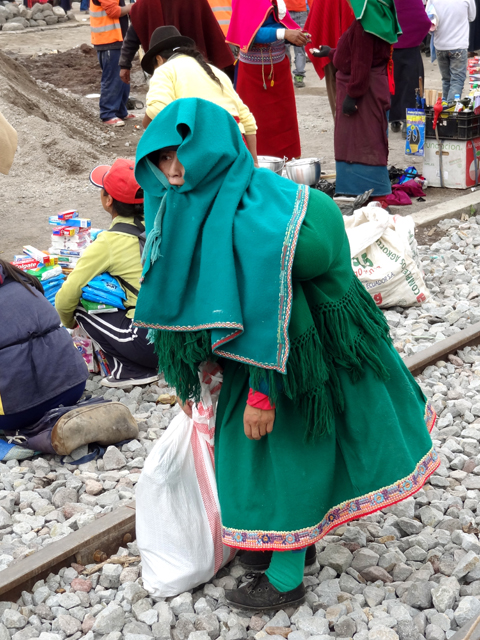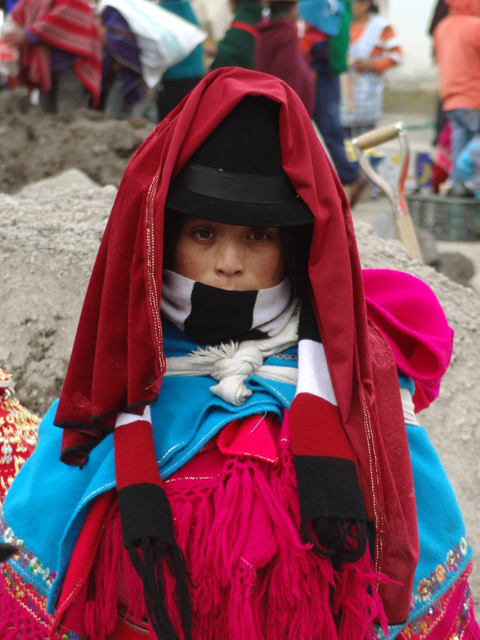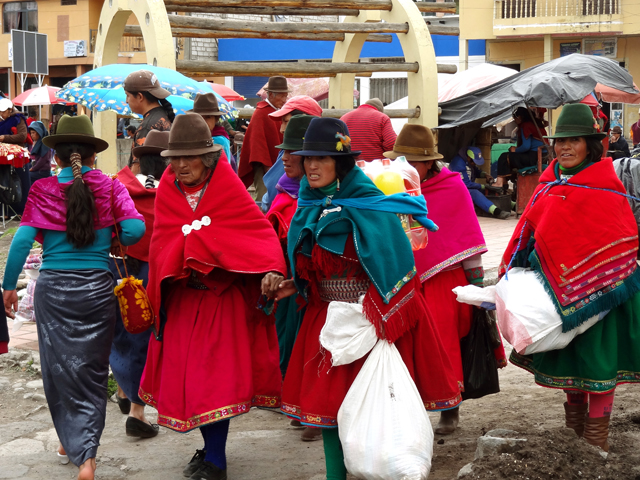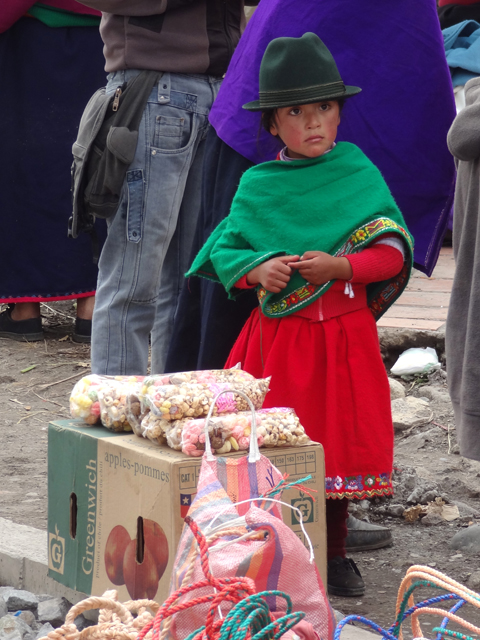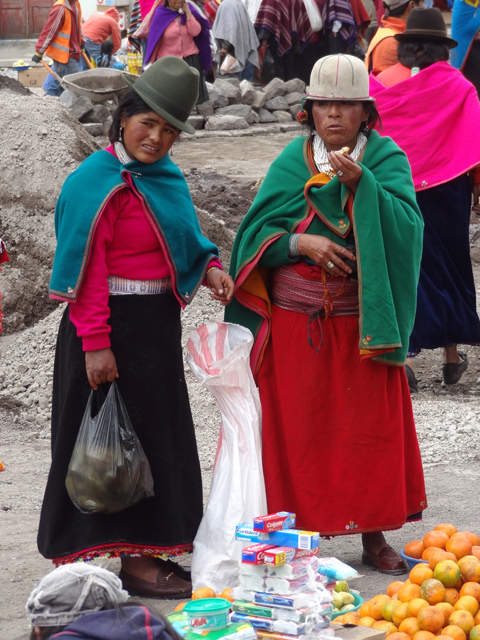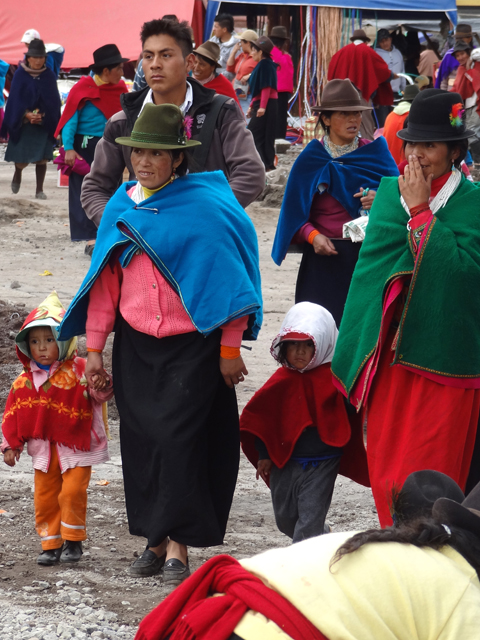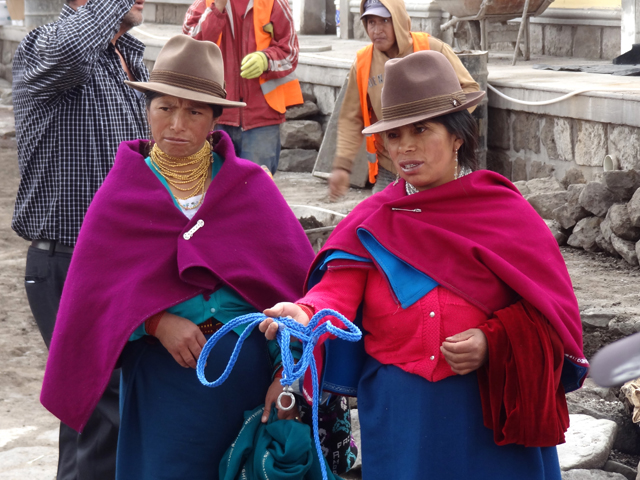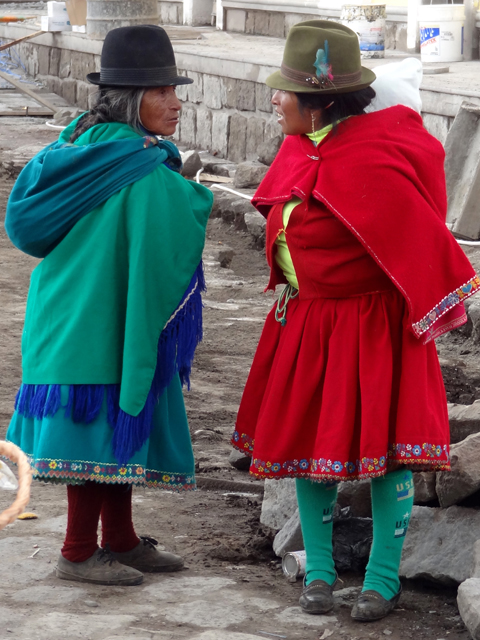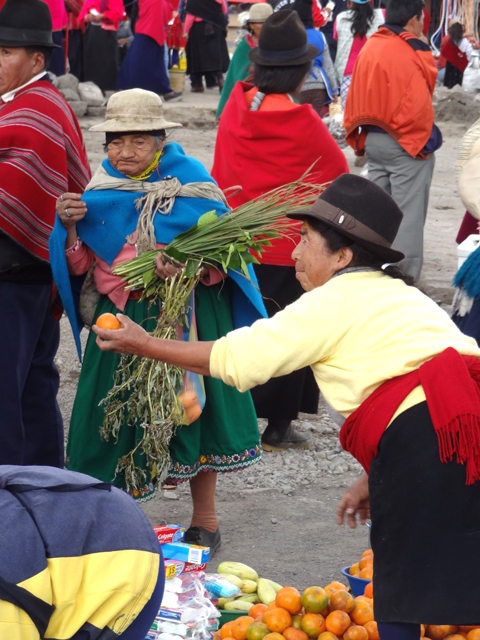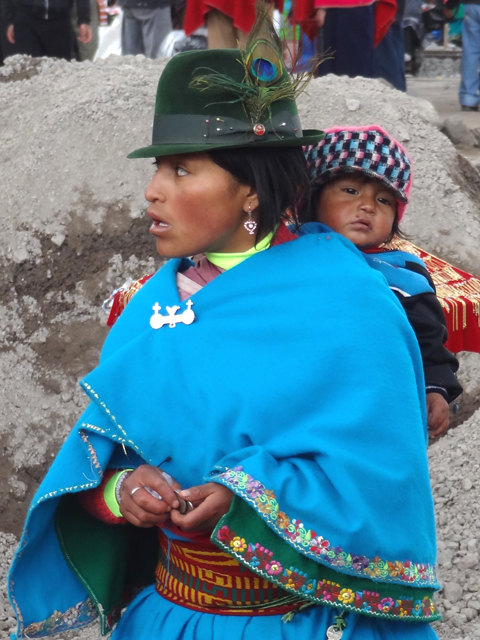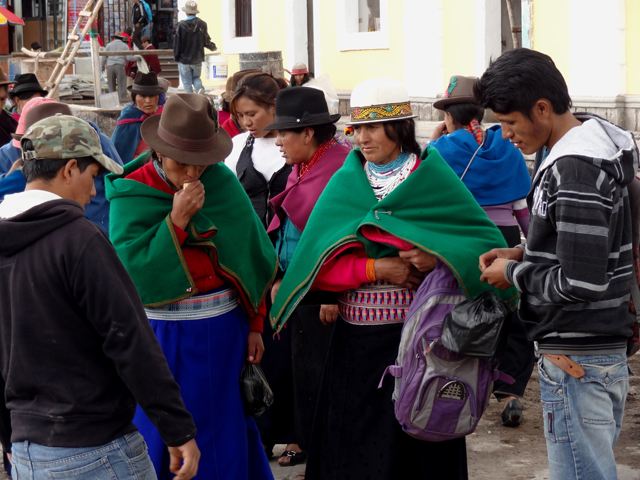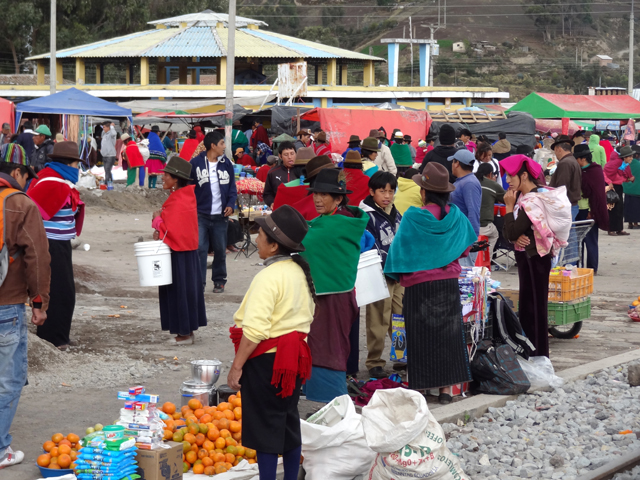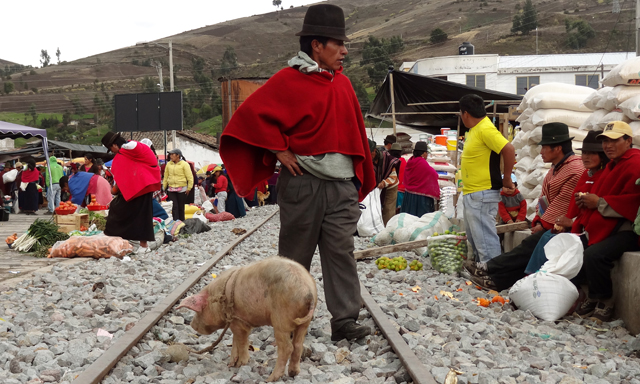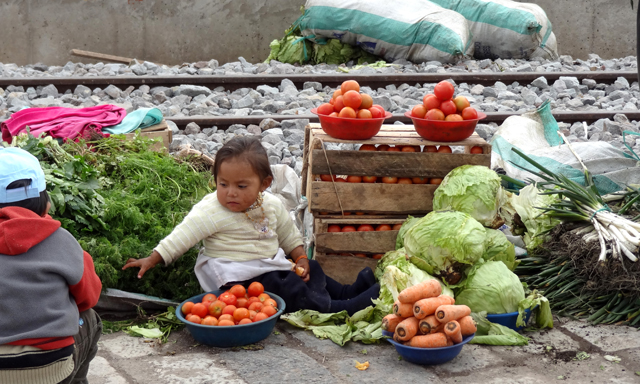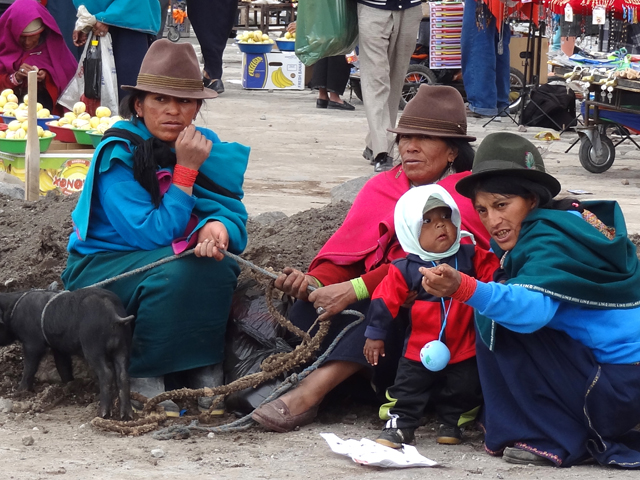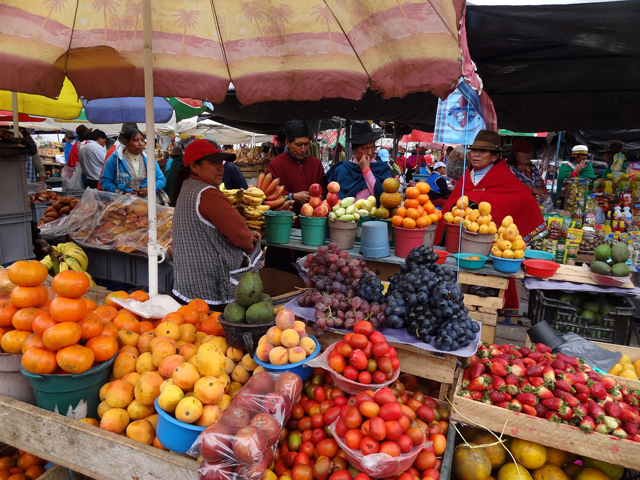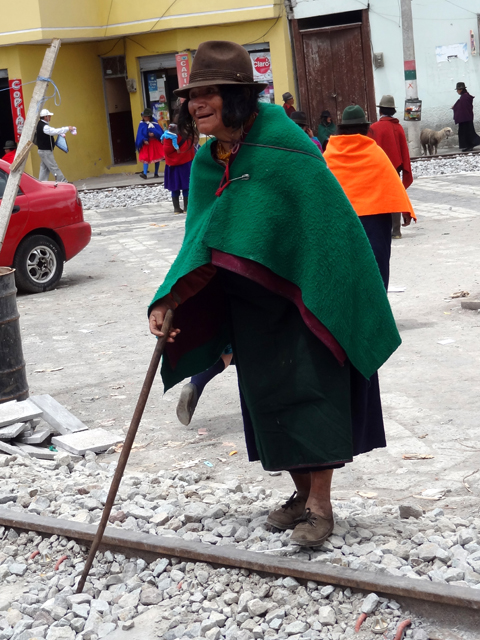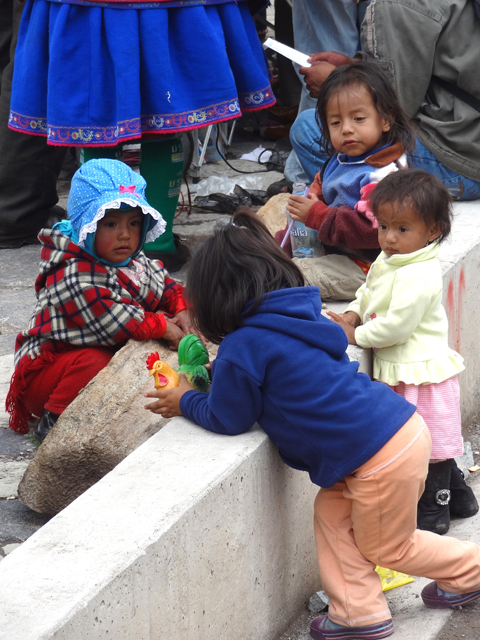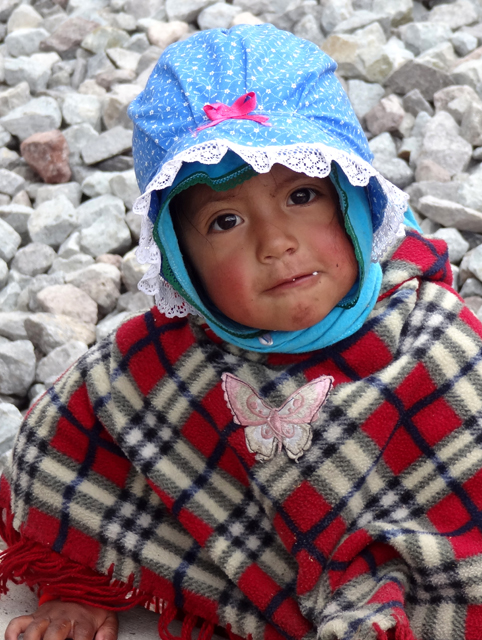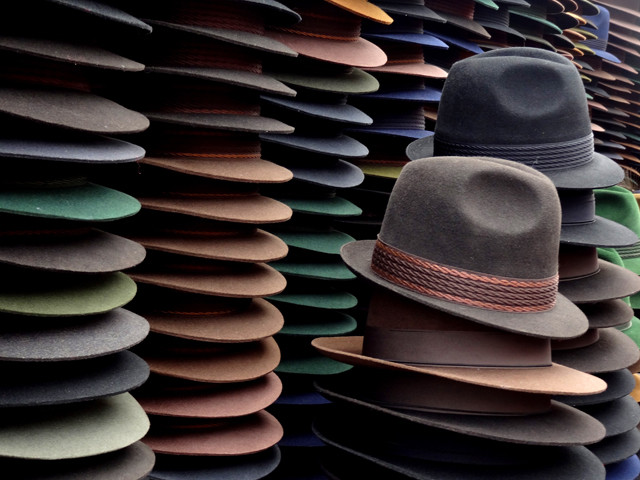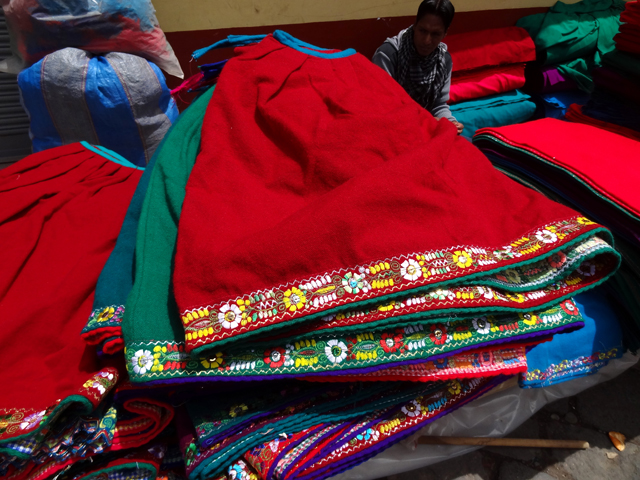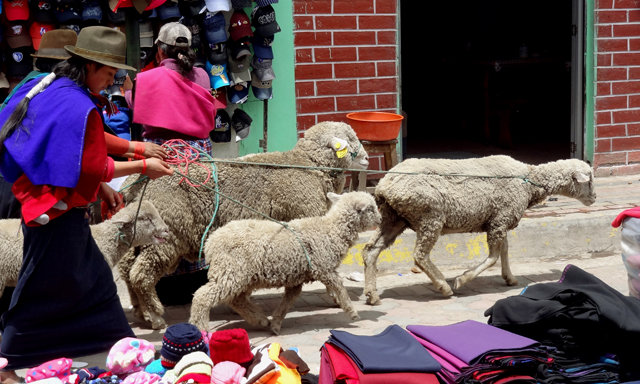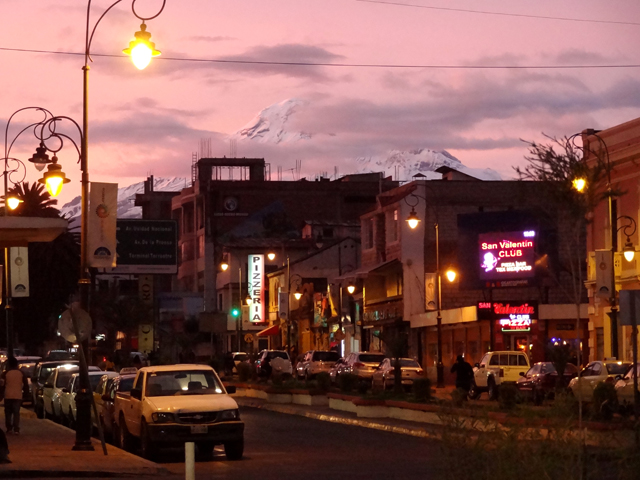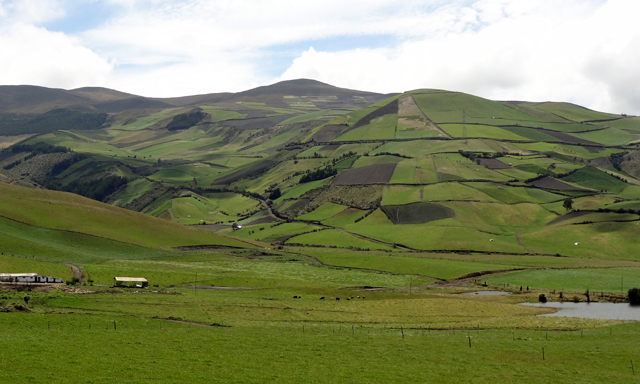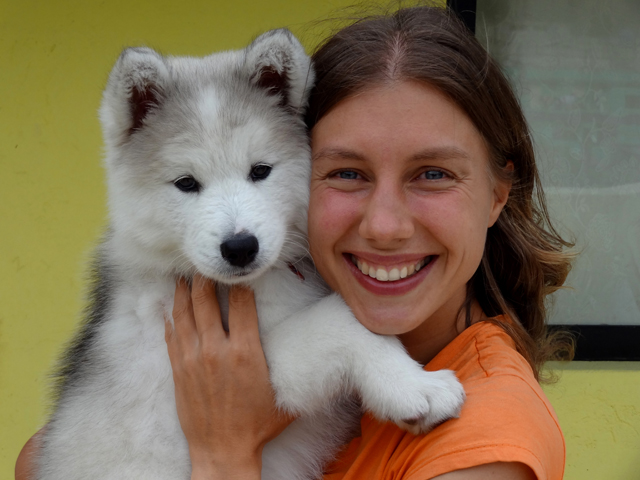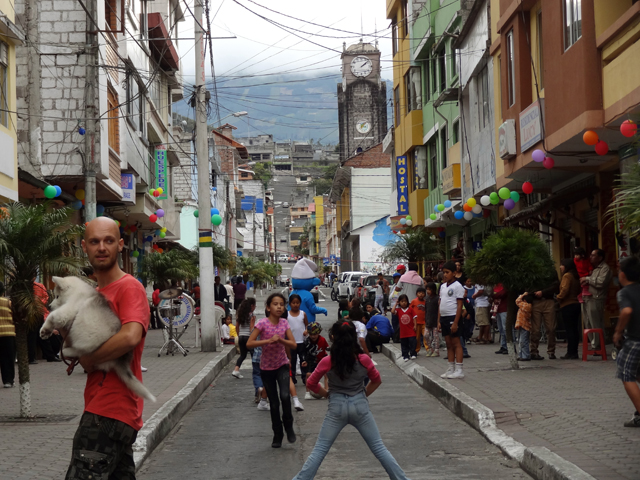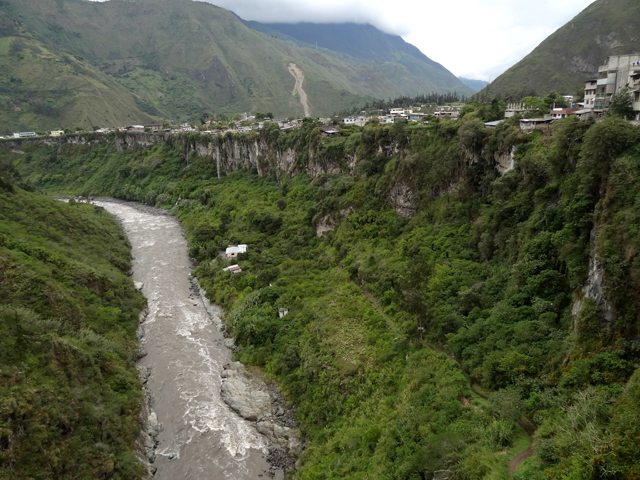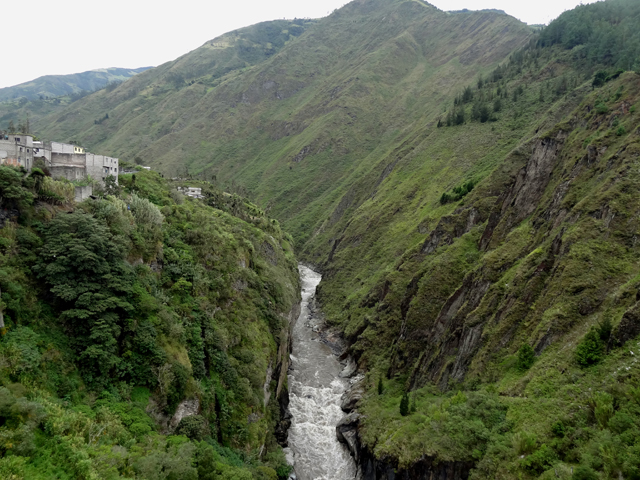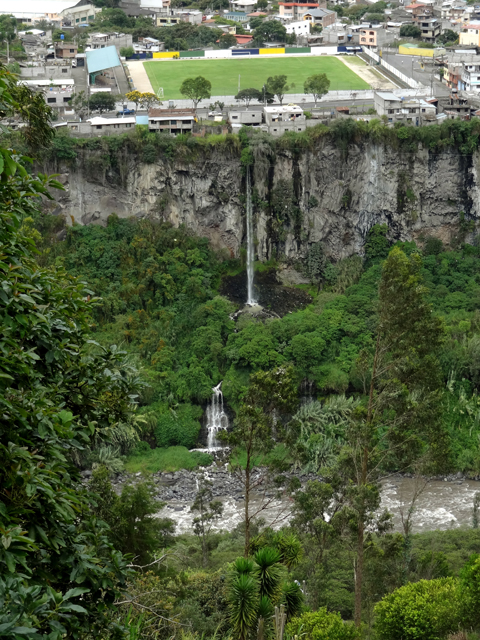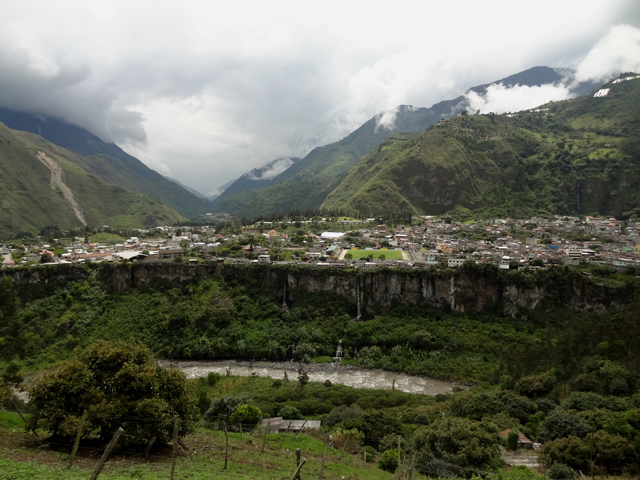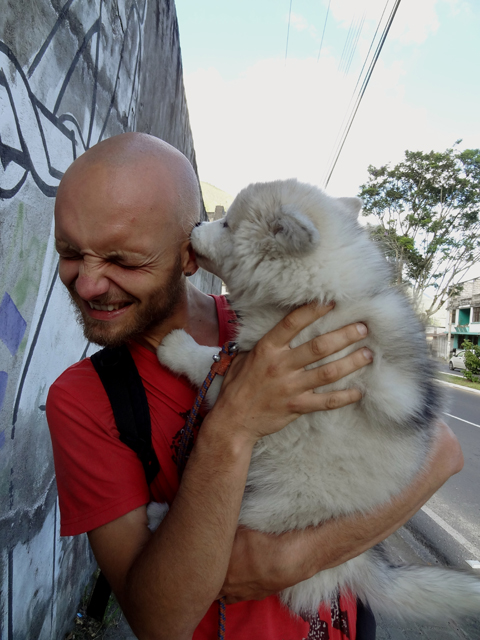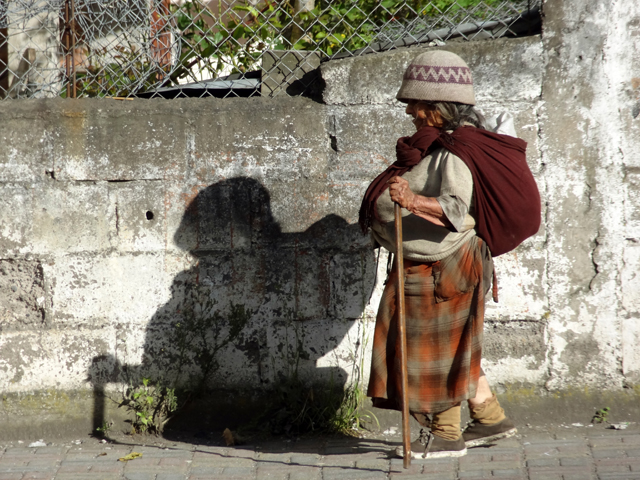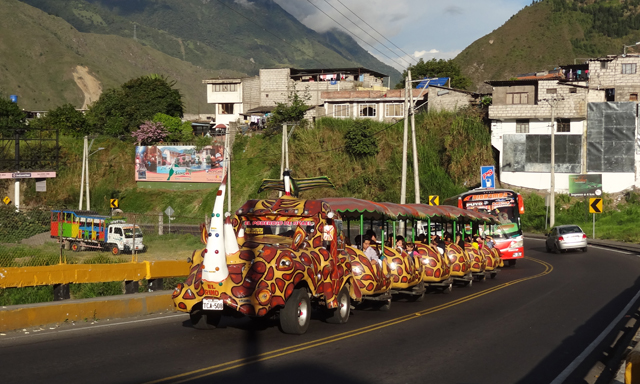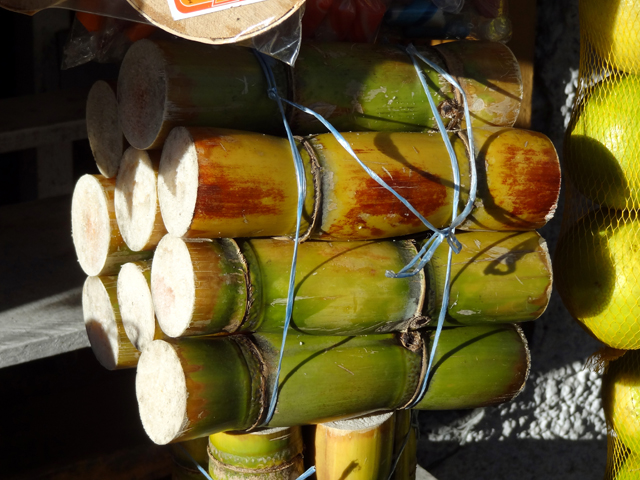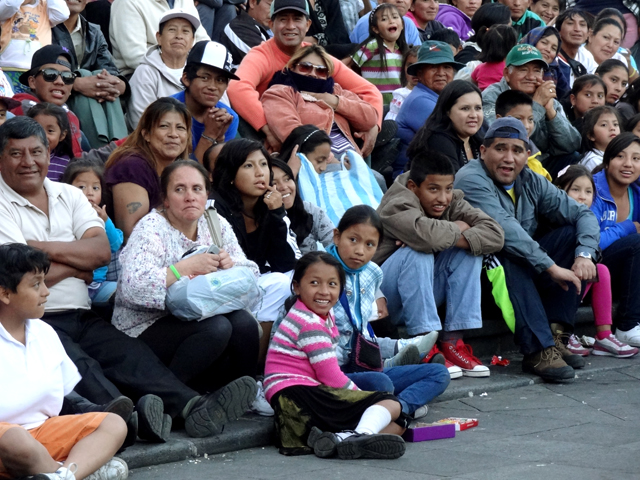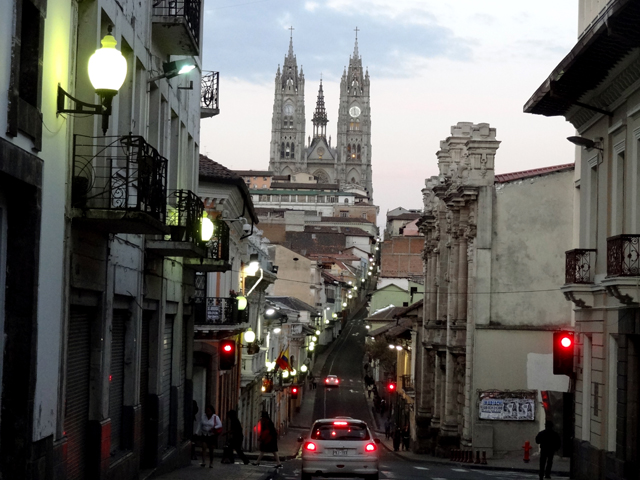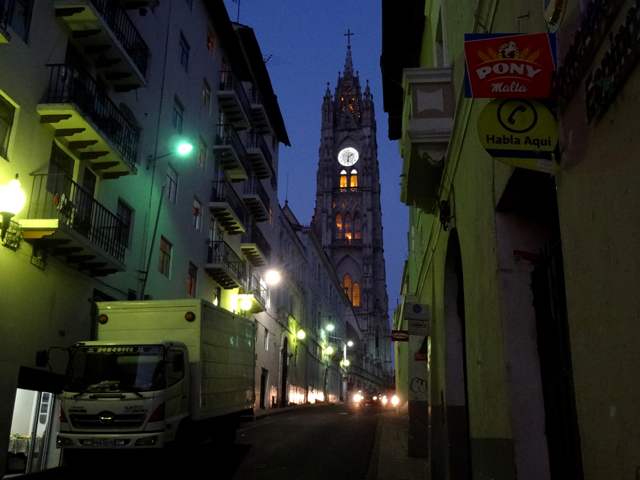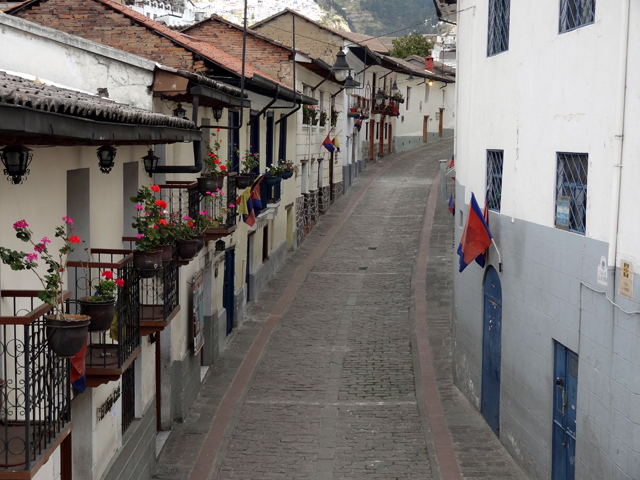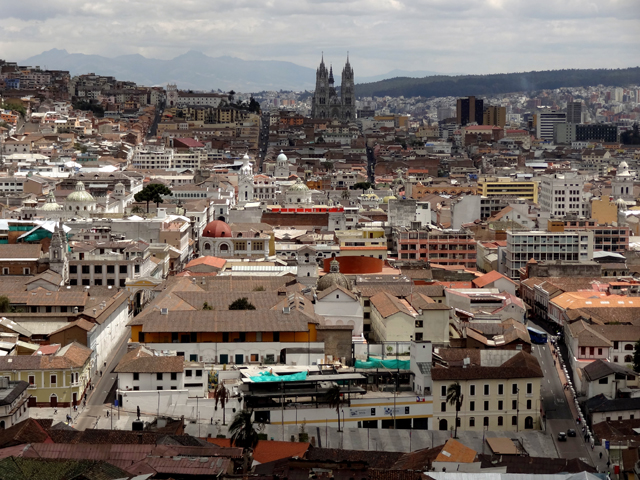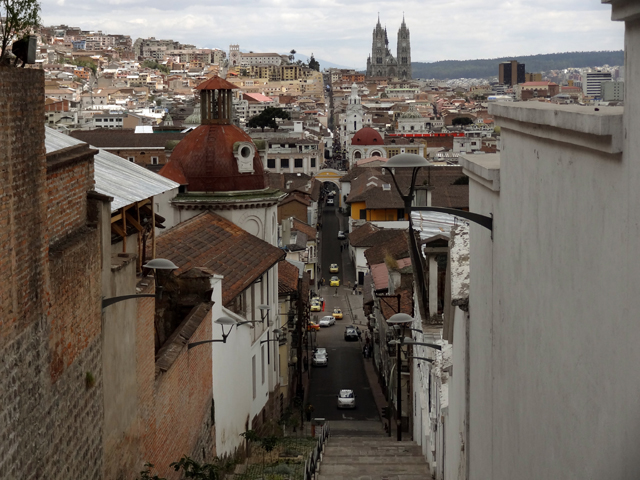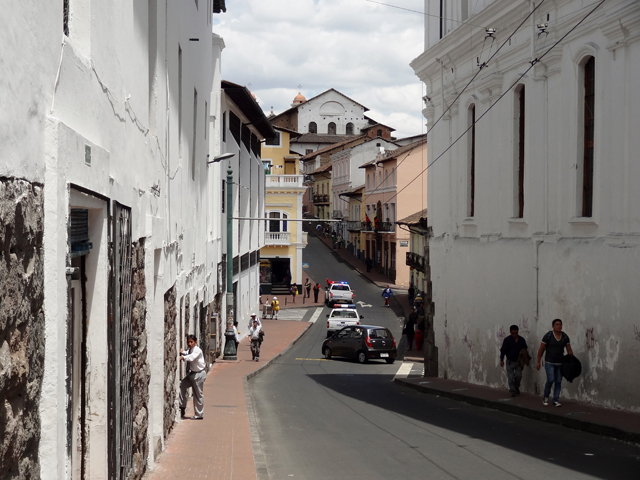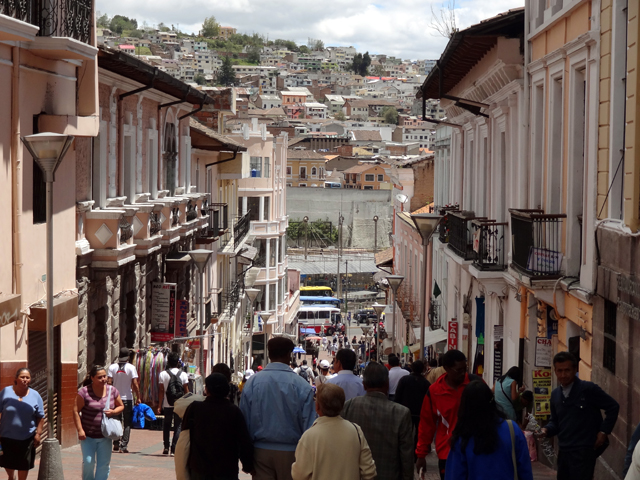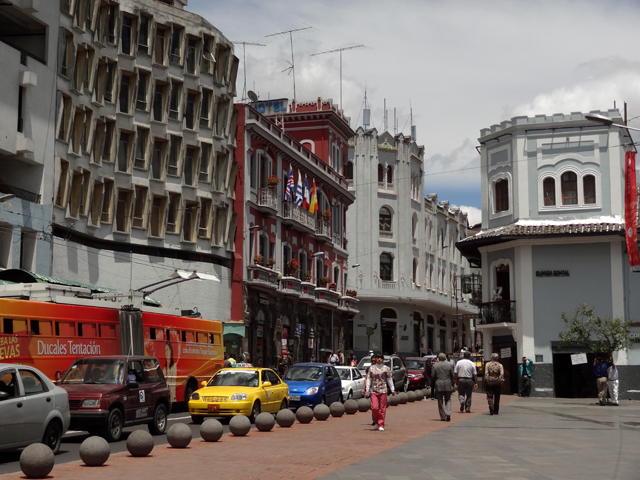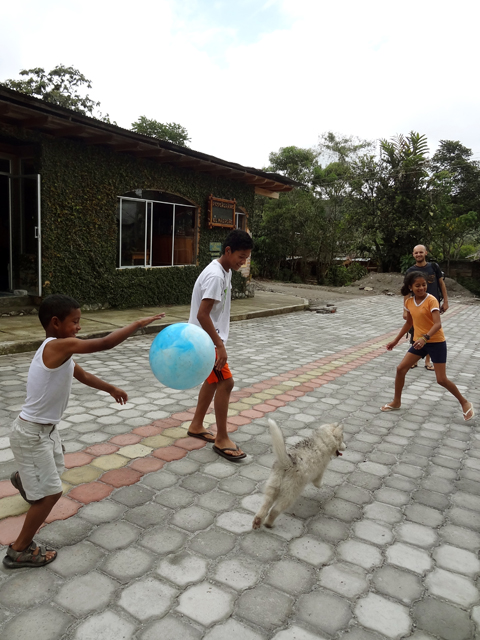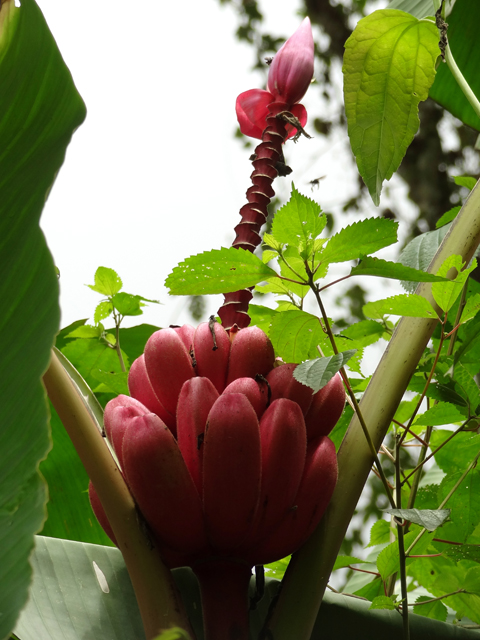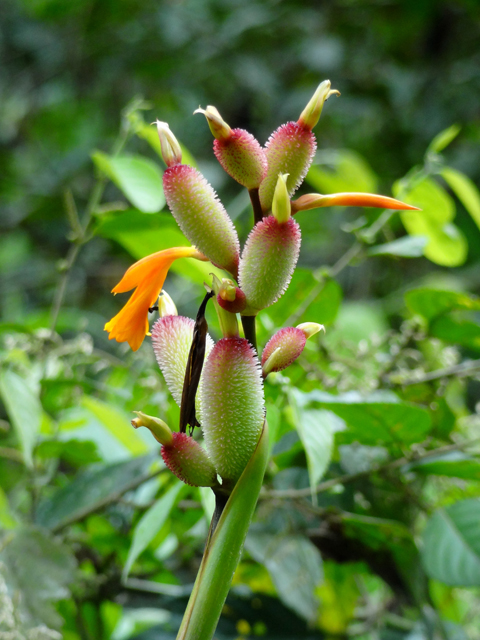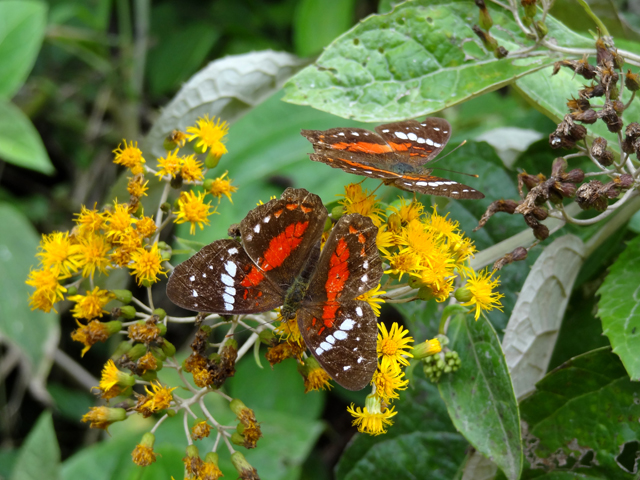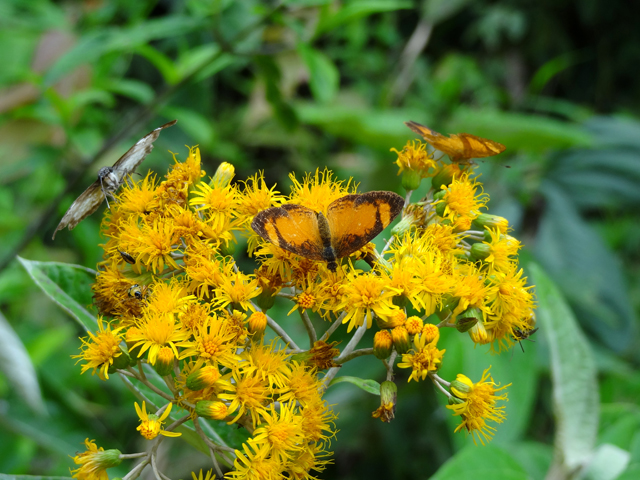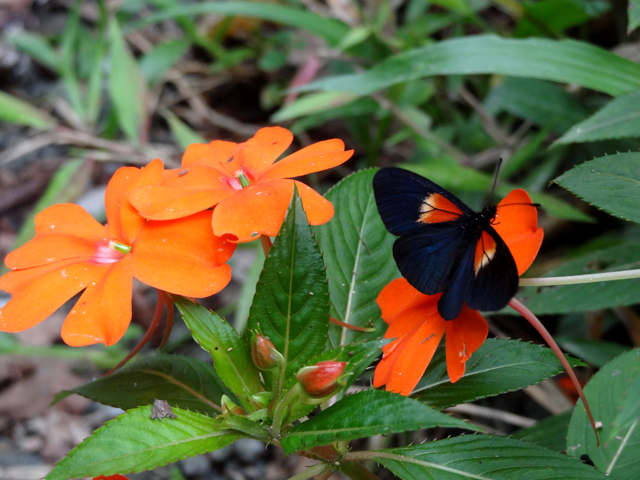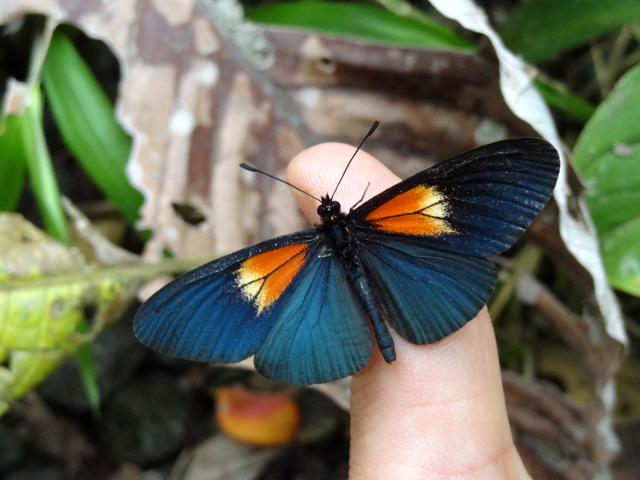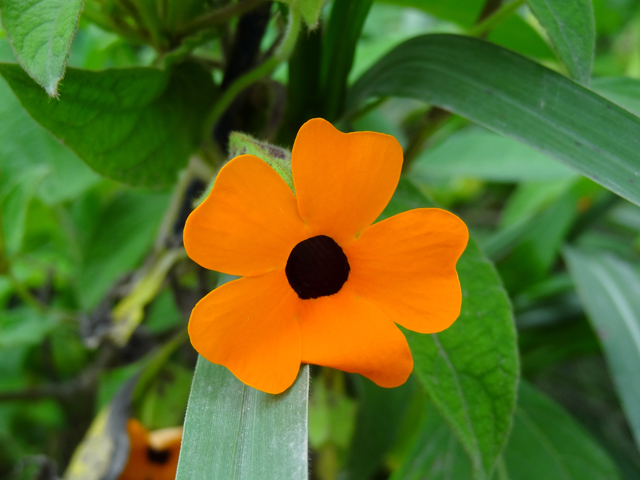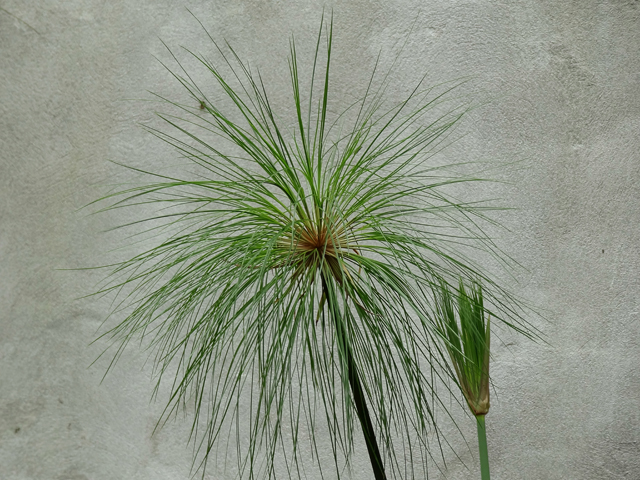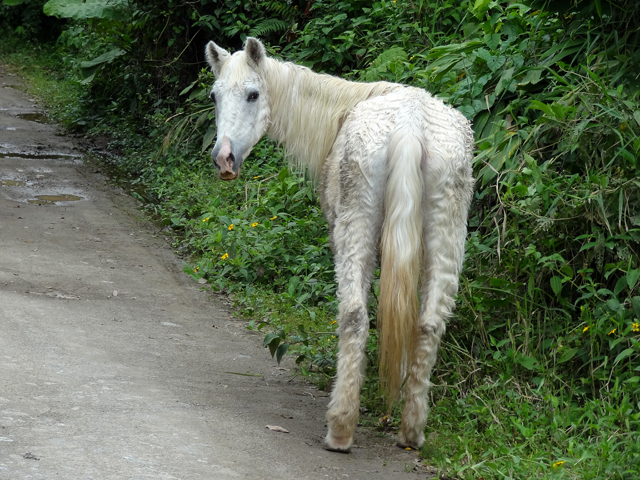Ecuador - cloud forests, volcanoes and colonial cities, part I
Peru to Ecuador - how a small puppy bladder can lead to a long trip:
Having got our puppy just a few days before leaving Peru for Ecuador, we were still in a state of figuring out the most optimized routine for travelling with this little creature. Like all puppies, he needed his regular meals, naps, walks and play sessions, all of which had to fit into the travelling routine, so our task was to combine the two routines - puppy and travel - into a manageable process. In the first week we still didn't know exactly how it all would go, so we made some blunders from time to time, like, for instance, deciding to take a two-hours minivan trip to the Peru-Ecuador border without putting Atuk into the crate. He'd already successfully lasted some shorter minivan journeys so we didn't see any trouble coming. However, that Sunday which was the last day of our Peru visa, after about thirty minutes of comfortable driving towards the border in the front seats of a minivan, the puppy decided that he needed an urgent stop, so because the driver was in a hurry we had to get off the van in the middle of nowhere to let the puppy relieve his tiny bladder. As we were hoping to catch another minivan just a short while later, we didn't insist that the driver should wait. To our big disappointment, we were stranded in that place for about 3 hours before another minivan finally stopped and we could continue our journey to the border city of Tumbes. In the waiting break Jordi had to risk his life for Atuk by going to a nearby house to refill the water where he escaped within an inch of his life an attack from some aggressive rottweiler (basically thanks to the chain which was restricting that beast), and the strong Ecuadorian sun almost fried all of us alive.
A very normal city of Machala:
In Tumbes we caught a bus to the border city of Machala in Ecuador and after a few-hours journey with a very quick immigration procedure and a symbolic customs check (nobody even asked us about the puppy), we arrived in our first city in Ecuador. Machala is a very normal place and doesn't belong to the traditional tourist route of Ecuador, except as a quick stop-over on the way to/from Peru. That's exactly what it was to us, except we decided to stay a day longer to give our little puppy his well-deserved rest and to take the time to decide on our next move. After just a couple of days which we filled with learning more and more about Atuk, taking walks around the city and studying the Ecuador guide, we were ready to move, our next destination being the colonial city of Cuenca.
Cuenca - a cozy city with an exaggerated Lonely Planet coverage:
The city while quite cosy and with a very special architecture, in reality didn't strike us as much as its description in the guide, possibly because we had only a couple of sunshine hours every day to appreciate its beauty, having to spend the rest of the time at the hotel due to heavy rain. The quiet time at the hotel was very welcome and dedicated to playing with/training the puppy and doing the previous three posts. Due to quite a lot of settled days we were able to finally give our puppy a more or less stable routine, with a walk to the market in the morning, breakfast, play, nap, brunch, walk to a nearby park, lunch, nap, walk, supper, play, sleep. The daily walk to the market was part of our experiment with feeding the puppy raw food which failed for a very banal reason - absence of a fridge. The puppy did love the raw chicken necks/carcases and we had every proof of just how good it was for his health, but unfortunately we had to postpone the raw diet till we are back home.
During the few hours of sunshine we had in Cuenca we had several walks in its picturesque colonial centre, Calle Largo - Cuenca's most famous street stretched on a cliff along the river, and checked a few places with the "panama" hats which bear the name of the wrong country simply because that's where the foreigners first discovered this super-durable and hundred-percent Ecuadorian hat which was worn by all the workers in the harbours (Jordi is now a proud owner of one).
Nariz del Diablo - a train ride we didn't take:
From Cuenca we headed further north to the city of Riobamba but on the way made a short (2-hours) stop in the village of Alausi to check the possibility of catching a very spectacular train drive to Riobamba. On arrival in Alausi we learnt that the train doesn't function any more except on its most touristy stretch - to the so-called "Nariz del Diablo" ("The Devil's Nose") and back. The biting price of 35EUR each and the very touristy vibe of the the whole thing made us quickly change our mind about the whole train adventure, so we decided to catch a bus further to Riobamba straight away. The same evening we arrived in this city and walked half of it from the terminal to the centre to find a budget hotel.
Riobamba - views of Chimbarazu and gateway to Guamote market:
Riobamba just like Machala is a very normal Ecuadorian city but in this case we had two reasons to stop there - to catch the views of the striking Chimbarazu volcano and to visit the amazing Guamote Thursday market an hour-drive away (luckily, it was precisely Wednesday evening when we arrived in Riobamba) which was the absolute highlight of our entire stay in Ecuador. Being definitely off-the-beaten-track and therefore purely local (= non-touristy), the market had a beautiful look and vibe, with hundreds of locals in colourful traditional clothes trading in all sorts of goods at the crossroads of a former railway. Let the photos below tell you what we really mean:
Riobamba and views of Chimbarazu:
Baños - thermal baths and waterfalls:
The next day we left Riobamba for Baños - a place even further north which is famous for beautiful hikes, thermal springs and waterfalls. During the couple of days we stayed in Baños we fulfilled the first two-thirds of this usual tourist program, dedicating the sunshine hours of the first day to a beautiful hike along the river Pastaza just across the San Francisco bridge (next to the terminal and our hotel), and on the second day soaking in the hot waters of the Baños de la Virgen together with dozens of locals. Volcanoes being the main feature of the Ecuadorian landscape, Baños had a seismic landmark as well - Volcano Tungurahua which only reveiled itself once during our stay in Baños, at which stage we hurried to a viewpoint close by and had time to take a couple of shots right before it got wrapped in thick clouds again.
Quito - a beautiful colonial capital with horrible infrastructure:
After Baños Quito was the next natural stop on our South-to-North Ecuador itinerary. After a couple of hours' bus we arrived at its southern station and got our first taste of this city's horrible living infrastructure. Now people who designed the city might have had good intentions as in order to provide the citizens with a fast mode of transportation they built what in Indonesia they call "metro-bus", but in Ecuador they overlooked one of the main principles of metro design - that the stops cannot be positioned with the same frequency as for a normal bus. What it means is that in Quito - a relatively small city compared to most capitals - a trip from the outskirts of the city to its centre can easily take about an hour, even by the "fast" metro-bus, and will always be in a crowded compartment (because there are not enough services). Poor public transport is not the only flaw of this capital, as it seems to lack very basic things that contribute to a comfortable living environment in an average South-American city - there are no markets, very few supermarkets, hardly any eateries, the main post office is a one-square-metre hole located in a shopping mall and equiped with nothing but a counter (no envelops, stamps, parcel boxes) etc. The only area of the city which boasts an abundance of restaurants and hotels is Mariscal Sucre, or the so-called Gringolandia ("foreigners land"), but just like all such modern touristy areas in colonial cities it's totally void of any authentic look (the Miraflores neighbourhood in Lima could be its twin sister). During our stay in Quito we escaped this tourist getto (just like we did in Lima) by opting for a hotel in the historic centre, which was not only cheaper but also placed us at the very heart of the sightseeing action.
Because we arrived on a Sunday, our first impression of Quito was that it was a disturbingly quiet city. The same evening after finally finding a hotel (as I've mentioned in a previous post, Quito was the only place where most hotels were reinforcing the "no pets" policy), we took a walk past the city's main square Plaza Grande to a very noticeable city landmark - Basilica de Voto Nacional where we took turns in checking the evening service with one of us staying with Atuk right outside the church (while we've never seen a "No pets" sign on a church door, something tells us dogs are not welcome at a service).
We started our next day with a short walk to the Panecillo viewpoint - a notoriously dangerous place according to the guide. A huge board at the very base of the staircase confirmed this reputation as it warned us in Spanish that robberies of foreigners are very common at this place. We didn't try our luck and went no farther than the first platform which we did accompanied by friendly locals who told us that we could join them till that point and patiently waited for us to take in the views of Quito and take some photos. Then having left Atuk for his usual shower nap, we did a quick walking tour which took us through the picturesque La Ronda street, on to the Guayaquil Avenue, past the Santa Catalina Monastery and Plaza del Teatro all the way to the modern part of Quito and its main not-attractive attractions - Alamedo and El Ejido parks and Avenue Amazonas in the Mariscal Sucre area, from where we caught a bus back to Plaza Santa Domingo - one of the squares of the colonial Quito and the location of our hotel. In the afternoon during the couple more hours before the usual rain we took Atuk for a walk which we combined with visiting some of Quito's most important colonial churches: San Francisco with its strikingly elaborate decoractions, Compania de Jesus (even more elaborate but with an entry ticket) and Iglesia del Sagrario (with huge plates of marble on the carrying pillars as the main decoration element).
On our last day in Quito we took a really long journey (bus + walking) to visit the foundation of Ecuador's most prominent and copied artist Guayasamin, whose cubism paintings of abused indigenous people won him international fame and a lot of sponsors, among whom we were stunned to notice names like Fidel Castro, Hugo Chavez and Mao. While the artist himself claimed that his paintings are a "prayer", a way to help make this world free from discrimination, seeing his smiling face next to dictators or observing the giant empty exhibition hall which he built with his own money for his own paintings along with another huge hall currently in progress and another foundation just a couple of hundred metres away, raises a lot of questions as to the genuinity of his claims... Surely the money that was used for building two huge half-empty complexes could have helped alleviate the sufferings of at least some poor indigenous people in Ecuador, or help build some village school... This, of course, is our personal opinion, and is based on our life philosophy of "the less you let your ego control you, the better".
The cloud forest of Mindo and its amazing inhabitants:
After Quito we still had quite a few places to visit in Ecuador, but because the whole country is so small, rather than planning the itinerary according to the transport, we did it according to the calendar: we wanted to visit the Otavalo Saturday market so with Saturday being three days away we decided to fill in the time gap with visiting the cloud forests of Mindo to the north-west of Quito. We arrived in this picturesque little village in the evening and after a long search for accommodation during which we probably checked all the lodges of Mindo we settled on the most budget solution - a tiny hotel right on top of the just as tiny Mindo bus station. During our search for a hotel we discovered that Mindo was full of street dogs who kept checking out our puppy and in one of the lodges we even found another puppy of about Atuk's age, size and energy which made him a perfect playmate for Atuk, so we spent some time every day of our stay in Mindo letting the two of them vent out the explosive puppy energy through play. Our next day was divided evenly between socializing our dog with the numerous street dogs of Mindo and hiking for about 4 hours through the cloud forest along the river. The hike was really beautiful, with the path full of flowers and butterflies - the photos below are our best testimony.
To be continued...

